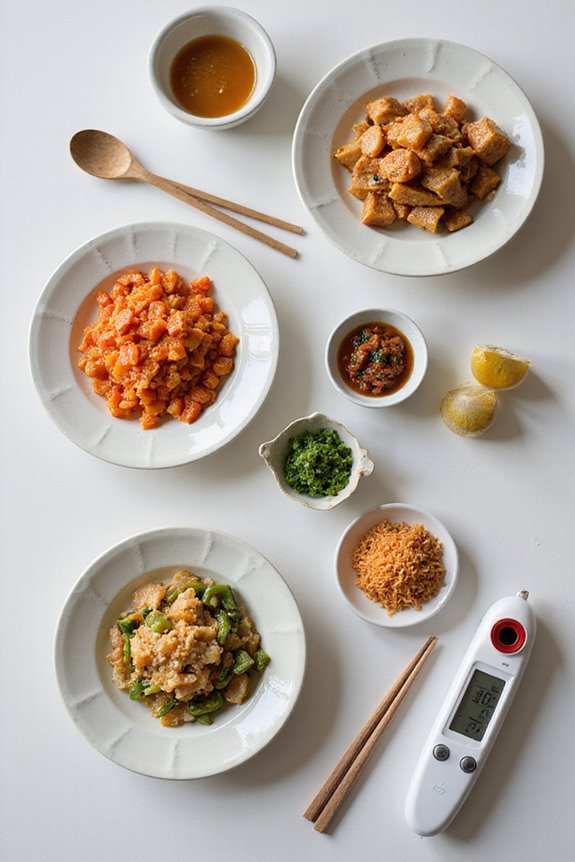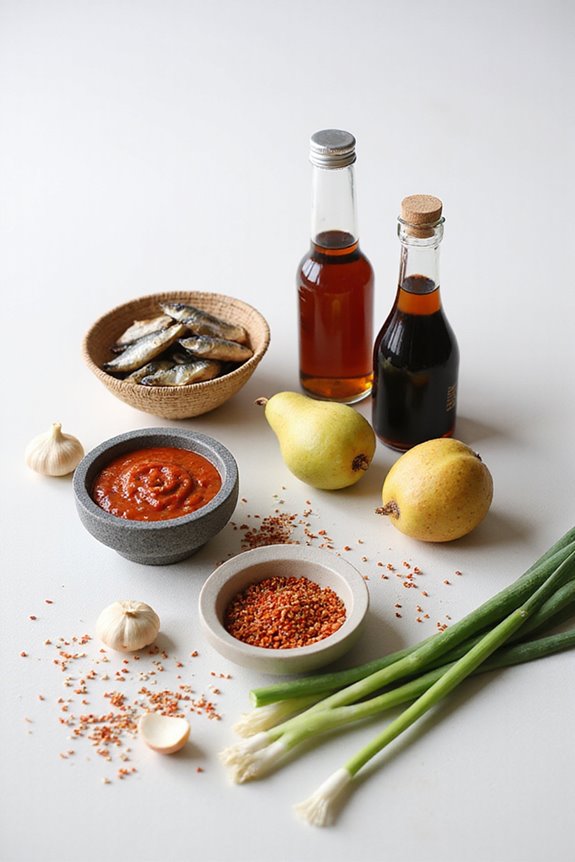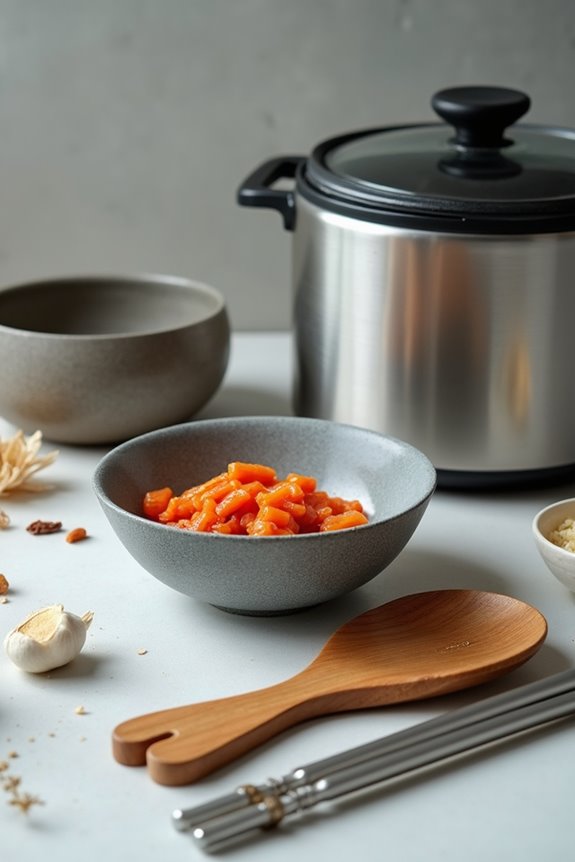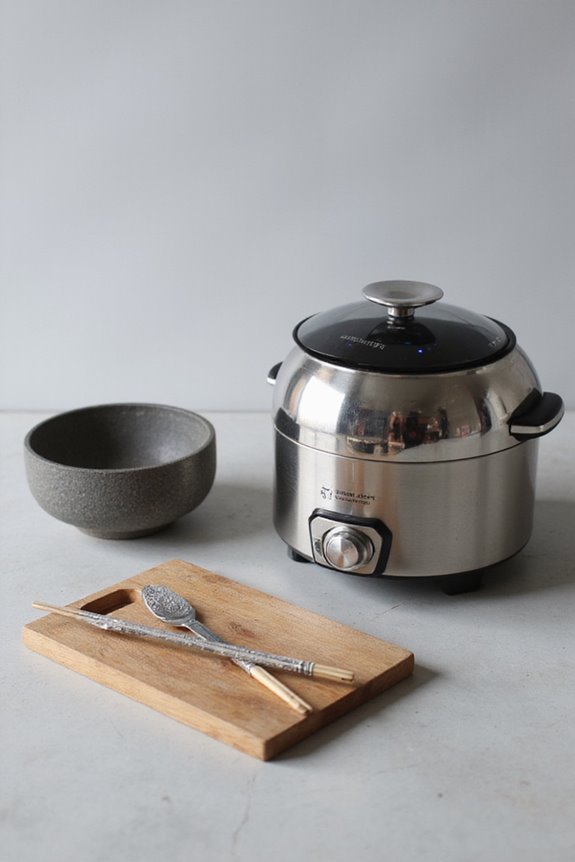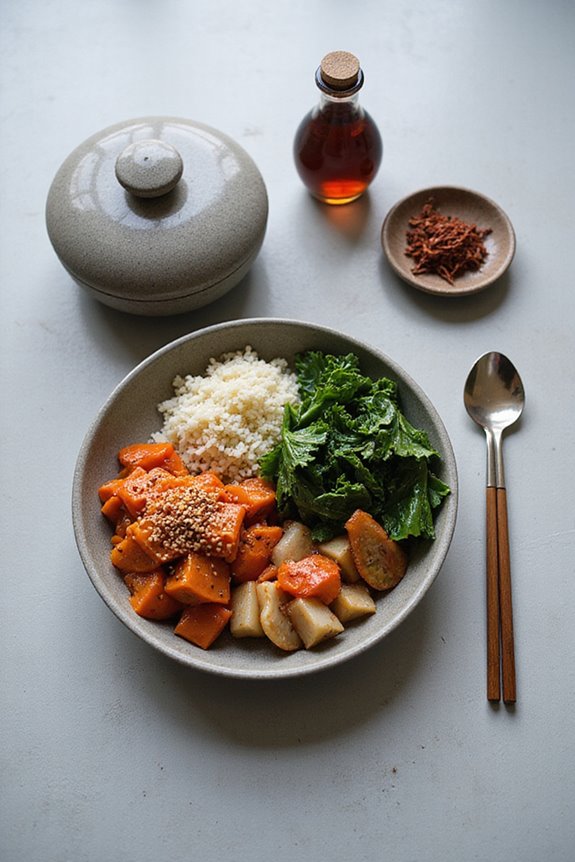In South Korea, ensuring food safety involves several key practices. We must adhere to HACCP certification, which helps manage potential hazards during food production. Additionally, clear and accurate labeling in Korean is required, detailing product information, manufacturer data, and storage instructions. Importers should also verify compliance with hygiene standards and maintain proper documentation. Regular audits of foreign facilities are essential to uphold safety protocols. By following these practices, we can enhance consumer trust and safety in the market.
Key Takeaways
- Ensure imported foods comply with South Korean hygiene standards and possess necessary export hygiene certifications for safe consumption.
- Use clear Korean labels on all food products, including essential information such as product name and storage instructions.
- Regularly audit and inspect foreign food facilities to maintain compliance with South Korean food safety regulations.
- Follow proper handling techniques to prevent foodborne illnesses, ensuring traceability throughout the import process.
- Stay updated on regulatory changes from the Ministry of Food and Drug Safety for continuous consumer protection.
Understanding Food Safety Regulations in Korea
When we consider food safety regulations in Korea, it is essential to understand the framework established to protect public health. The Food Sanitation Act and the Special Act on Imported Food Safety Control primarily govern food safety in the country. These regulations guarantee strict oversight regarding food labeling, such as requiring evidence for health claims. Importers must obtain approval from the Ministry of Food and Drug Safety (MFDS) to certify that recycled materials meet safety standards, enforcing regulatory compliance. Non-compliance can lead to significant penalties, including revocation of approvals. Additionally, the recent amendments to food safety standards help align practices with international best practices, guaranteeing a safer food supply for consumers while facilitating trust in food products.
Importance of HACCP Certification
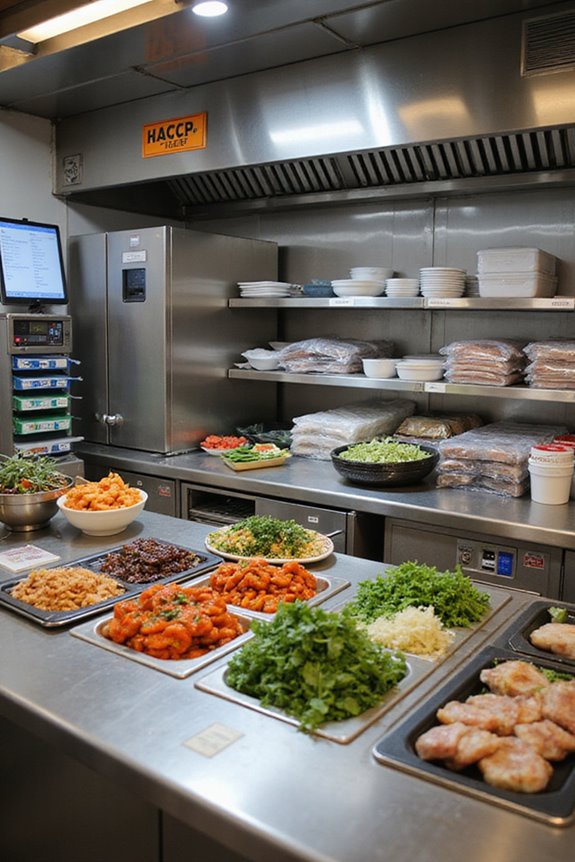
HACCP certification plays an essential role in ensuring food safety across various sectors, as it establishes a systematic approach to identifying and managing potential hazards. We recognize that the certification process is vital for compliance with South Korea’s food safety laws and facilitates international trade. HACCP benefits include enhanced consumer trust, as certified products indicate adherence to strict safety standards. Implementing HACCP helps businesses reduce the risk of foodborne illnesses and improves their market position, as many retailers prefer suppliers with recognized credentials. In addition, the ongoing regulatory framework mandates HACCP for a wide range of food products, reinforcing its importance. Ultimately, HACCP certification not only protects consumers but also aids companies in achieving operational excellence and maintaining quality assurance.
Navigating Labeling and Packaging Standards

Guaranteeing food safety extends beyond HACCP certification; it also involves traversing the complex landscape of labeling and packaging standards. As we navigate these regulations, we face specific labeling challenges, particularly the need for clear Korean language labels on all imported food. These labels must include essential details, like the product name, manufacturer information, and storage instructions. Packaging innovations also play a significant role, with recent updates requiring more detailed information on thawed frozen products. It’s vital for us to remain informed about ongoing regulatory changes, as the Ministry of Food and Drug Safety (MFDS) frequently revises standards to enhance consumer protection. By adhering to these regulations, we can guarantee transparency and fair trade in the Korean market.
Key Import Controls for Food Safety
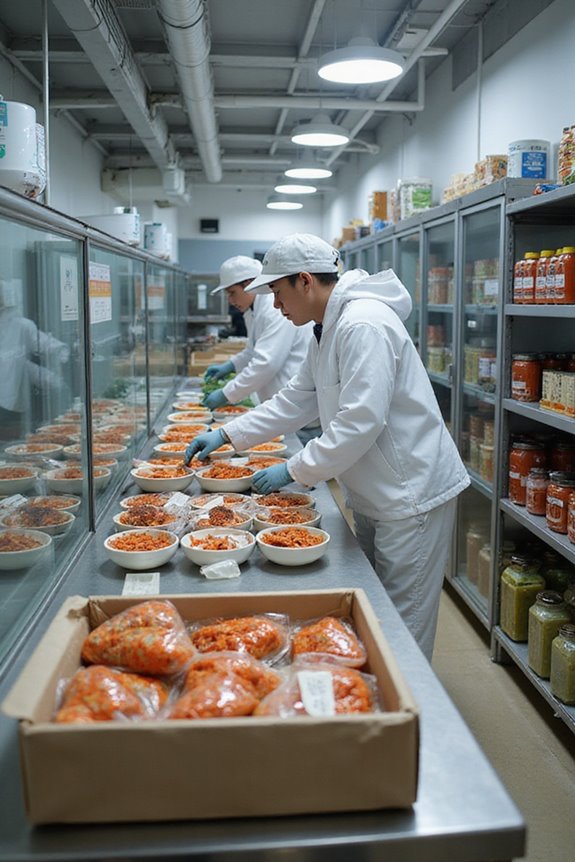
Effective import controls play a crucial role in maintaining food safety standards as we trade internationally. The Import Sanitation Assessment System guarantees livestock products and specially controlled food items meet Korea’s strict requirements. This system involves a six-step process that includes sending questionnaires and conducting overseas inspections of foreign food facilities. Only countries with equivalent sanitary control systems are approved for importation. Moreover, foreign establishments must pass ongoing inspections to maintain their registration status. Mandatory sanitary certificates from authorized agencies are required for live animals and certain products, confirming compliance with Korea’s health regulations. By implementing these import sanitation controls, we work to protect consumers and uphold safety in our food supply chain.
Identifying Hazardous Substances in Food Production
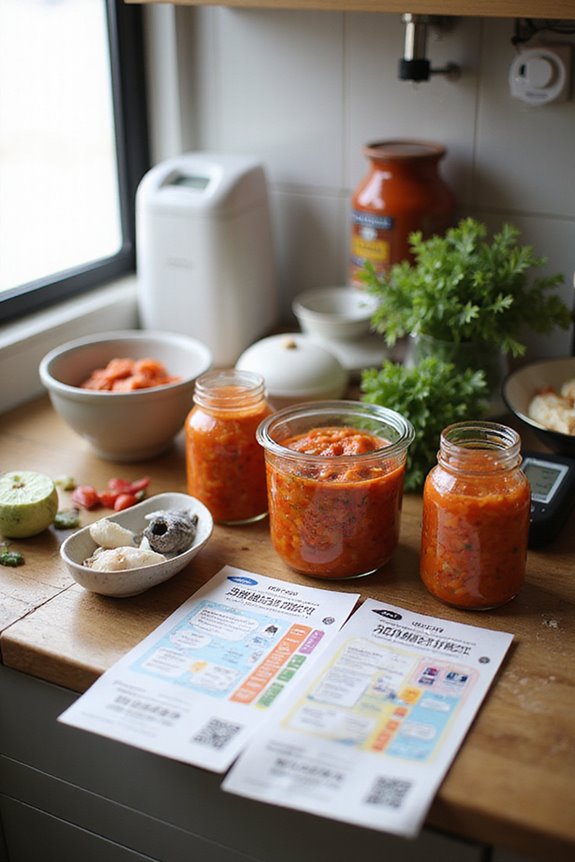
Identifying hazardous substances in food production is essential not only for consumer safety but also for maintaining public trust in the food supply chain. Toxic materials, such as certain heavy metals and chemicals, can inadvertently enter food products during production or packaging. In Korea, the Ministry of Food and Drug Safety (MFDS) conducts hazardous identification through rigorous standards and regulations, preventing the use of harmful materials. For instance, recent amendments to the Korean Food Sanitation Act detail maximum allowable limits for lead and improved methods for arsenic detection. Compliance with these standards is critical. Additionally, stakeholders, including consumer organizations, can suggest substances for assessment, ensuring thorough scrutiny of materials that could potentially pose health risks in our food supply.
Enhancing Public Trust Through Food Safety Measures
While we navigate the complexities of food safety in Korea, enhancing public trust is essential to maintaining confidence in our food supply. Our recent initiatives, such as a public-driven inspection system, allow citizens to engage in food safety measures directly through petitions. By publicly sharing inspection results and involving a dedicated committee to oversee the process, we promote transparency and accountability. This approach not only fosters trust building within our communities but also encourages public engagement in food safety issues. Furthermore, the establishment of a cross-ministerial Food Safety Committee guarantees thorough planning and collaboration among key government agencies. As we continue integrating these measures, we strengthen the framework supporting food safety, ultimately bolstering public confidence in our food systems.
Tips for Safe Handling of Imported Foods
When handling imported foods, we need to prioritize safety and guarantee compliance with established guidelines to minimize health risks. Importers bear significant responsibilities, certifying that all products meet South Korean hygiene standards before shipment. This includes verifying that each batch has the necessary export hygiene certification from the exporting country. We also need to cooperate with food safety inspections, recognizing that only foods passing rigorous tests will receive clearance into the market. Regular audits of registered foreign facilities help maintain compliance, while proper documentation and traceability guarantee accountability throughout the import process. By adhering to these protocols, we create a safer food environment and protect consumer health effectively.
Staying Informed About Nutritional Labeling Requirements
Understanding nutritional labeling requirements is essential for both consumers and manufacturers to guarantee compliance with regulations set by South Korea’s Ministry of Food and Drug Safety. We need to stay informed about the new rules effective from July 1, 2023, which mandate specific nutritional information on food labels. These requirements secure nutritional compliance, helping consumers make informed choices. Labels must clearly present information in Korean, enhancing labeling clarity. Products like bread, pasta, and certain beverages are now required to show nutrient proportions relative to Korean Nutrient Reference Values. Additionally, special foods for specific groups must adjust nutrient claims accordingly. By following these regulations, we can secure our health and safety while supporting manufacturers in meeting their obligations.
Frequently Asked Questions
How Can I Identify Authentic Korean Food Safety Certifications?
To identify authentic Korean food certifications, we can check the visible certification labels and use online platforms to verify compliance with safety regulations. Authentic certifications guarantee products meet rigorous food certification standards, safeguarding our health.
What Are Common Foodborne Illnesses in Korea?
We recognize that common foodborne pathogens in Korea include Norovirus and EHEC. By implementing effective prevention strategies, we can greatly reduce the risk of outbreaks and protect ourselves from foodborne illnesses in our communities.
How Often Should I Inspect My Kitchen for Safety?
We should check our kitchens regularly to maintain hygiene. By establishing an effective inspection schedule—ideally monthly—we can catch potential issues early and guarantee our cooking environment stays safe and compliant with health standards.
What Are the Best Practices for Storing Korean Ingredients?
When we’re storing kimchi, we need to keep it submerged in brine, ensuring freshness. For preserving gochujang, let’s remember to keep it in a cool spot or the fridge, following storage guidelines closely for best results.
How Can I Report Unsafe Food Products in Korea?
When the sight of questionable food makes our stomachs churn, we can take action! By following the reporting procedures on official city portals, we guarantee food safety and help protect our communities from unsafe products.

